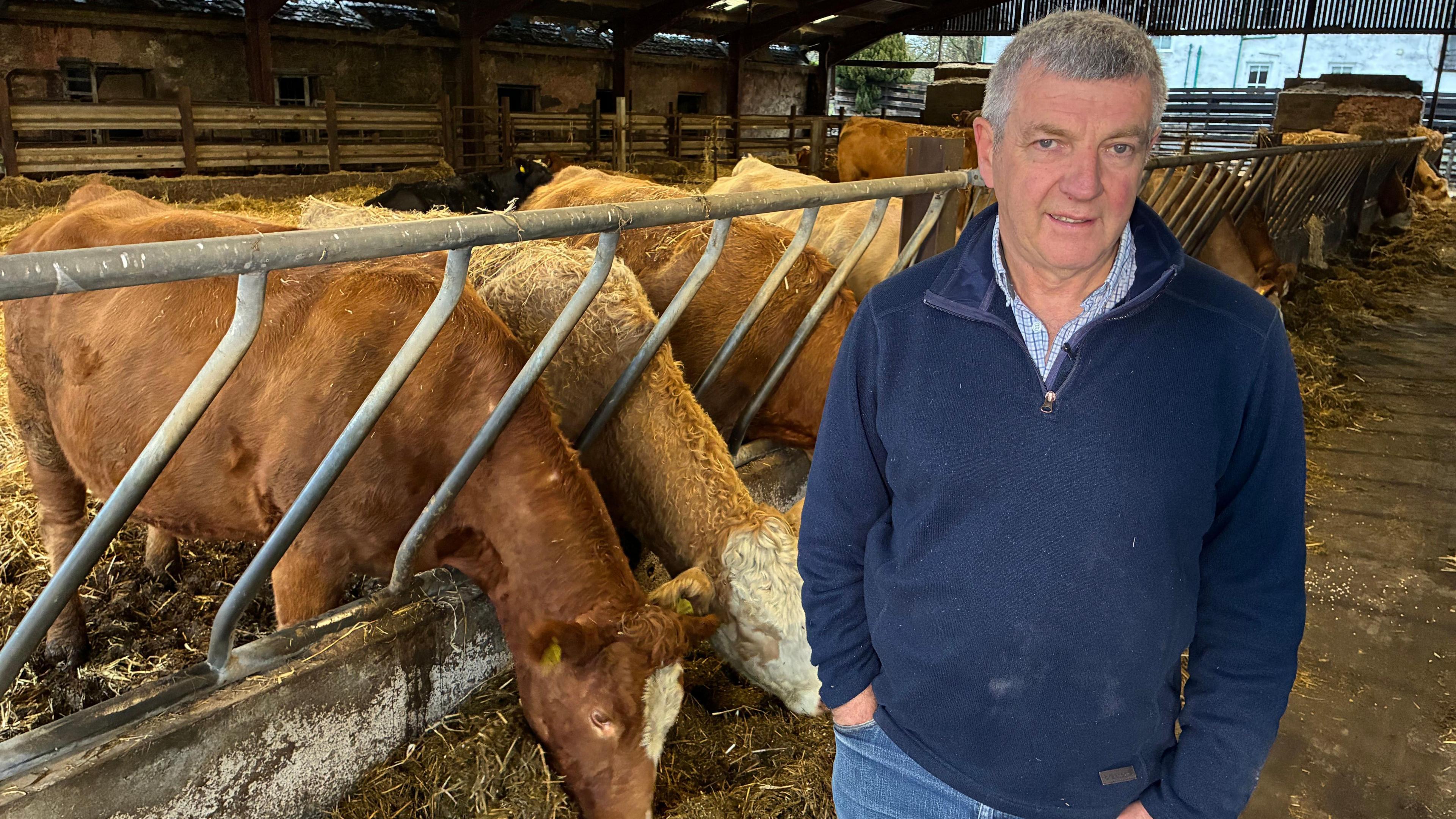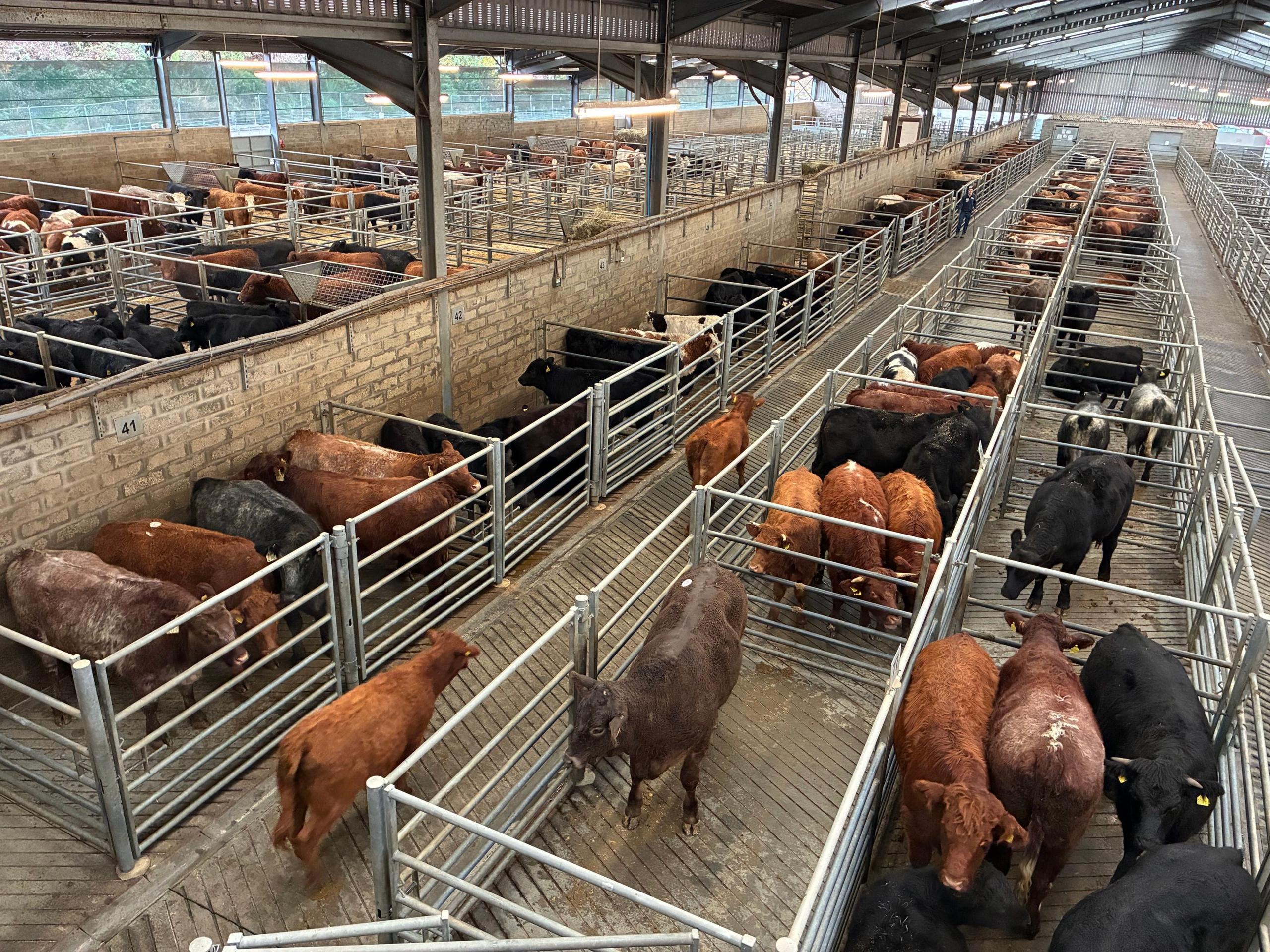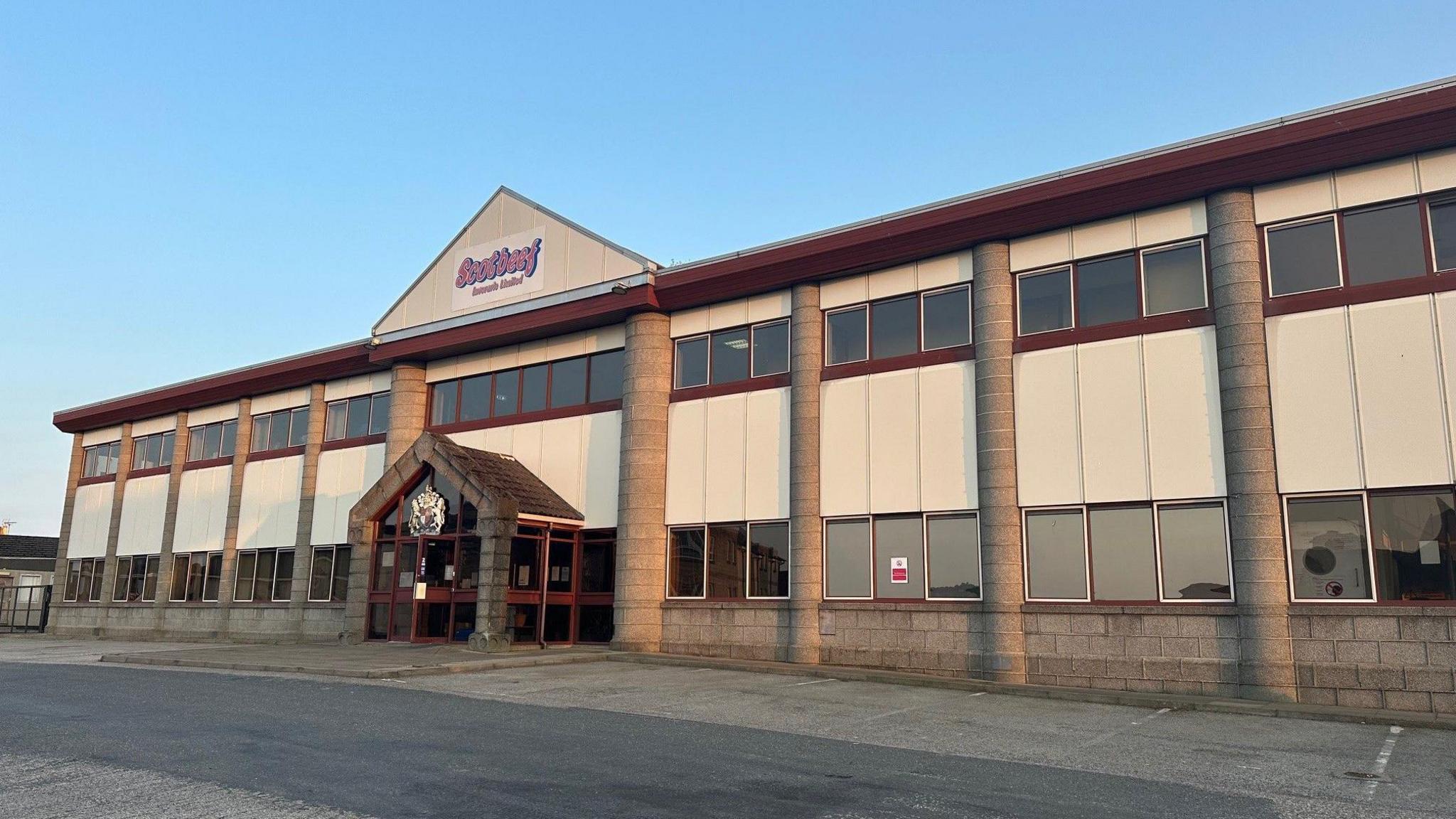Scottish farmers 'at last' make returns as beef prices soar

Hugh Fraser says he can now see a future in beef cattle farming
- Published
It has been 33 years since Hugh Fraser took over the tenancy of Kinchyle Farm, between Inverness and Loch Ness, to raise beef cattle.
For a long time, he has been unable to see a future in the beef industry - he can now.
"My wife is an accountant," he says, "and she kept telling me 'cows are not making money - why are you keeping them?'
"But it's what we do. It's what our land is fit for here. A lot of Scotland is less favoured area.
"It's not fit to grow anything other than grass, and sheep and cattle turn that grass into protein."
Also chairman of the livestock committee of the National Farmers Union Scotland (NFU Scotland), Mr Fraser is reflecting on an extraordinary period for beef.
In the past five years, according to the Agriculture and Horticulture Development Board (AHDB), the auction price of the typical industry steer has more than doubled.
The consequence has been an extraordinary period for shoppers as well. Beef prices have risen more than 50% in the past five years.
According to the Office for National Statistics (ONS), which publishes its monthly inflation figures on Wednesday morning, the more notable increases in food prices have been across some dairy, chocolate, coffee and sweets, but nothing comes close to the increase for beef.
The overall UK inflation rate has fallen for the first time since March to 3.6%, but food price inflation increased - with prices on average 4.9% more expensive than they were in October last year.
According to both the ONS and AHDB, over the past 12 months, the average retail price of beef has gone up by 27%.
AHDB says a kilo of minced beef has typically gone up by 37%, to £6.74 for a kilo of standard mince and £10.57 for the leaner quality.
At the top end, and in only 12 months, fillet steaks have gone up from £30 per kilo to £47.
Why are beef prices so high?
The explanation is the simplest law of economics - supply and demand. Prices are not set by producers, but in the auction ring.
Supply has been cut back because the number of cattle has fallen. During the last decade, there wasn't much of a living in it as prices stagnated.
Hugh Fraser explains that his costs have kept rising, and he's looking for clarity that prices won't fall steeply, and nor will the subsidy that avoids sharp cuts in production or sharp increases in price to unaffordability.
He reels off the average annual increases in recent years.
Labour costs up by at least 8% per year, boosted last year by the higher minimum wage. Fertilizers by 12%, fuel 10% year on year. Fencing costs have more than doubled and, although he grows most of his feed, any he buys in is costing him an average of 10% extra each year.
Insurance, meanwhile, tops all these costs. Up 13% in the average year as insurers assess the risks of climate change and more extreme weather.
Prices have risen a lot in the past five years, he concedes. "But for 10 years, they sat flat, and we faced some massive increases in price over that time."

In the past, a drop in supply and rise in prices would quickly bring a response from importers, drawing in Irish and South American beef.
But stock numbers have fallen worldwide, and imports are not easing the supply shortfall.
The other response to higher prices is to increase domestic production. But in beef farming, it's not a switch to be turned on and off.
Farmers say it takes four or five years to boost breeding and increase the number of stock going for slaughter.
And it requires confidence that prices will hold up amid global economic uncertainty and new trade deals that will, within 12 years, let Australian and New Zealand meat into the UK without tariffs or quotas.
Confidence is key to making long-term investments, says Mr Fraser, with an eye to his son, Craig, aged 30, who has taken charge of operations at Kinchyle, currently with 190 head of cattle.
What about demand?
With higher prices, demand for beef has fallen. AHDB says volumes are down 2% this year, while production is forecast to be down 4% on last year.
At John M Munro Butchers based in Dingwall, with six outlets and supplying wholesale to 200 other independent outlets, managing director Charlie Munro notes the changing consumer choices as prices have soared.
Some are moving to shin of beef or ox liver, he says, "and what's perceived as the lower end of the market.
"But a cheaper cut from a good animal is still good nutritional beef. As long as they're buying something, it keeps the trade buoyant."
It's a similar story for those eating out.
"There are very few restaurants with steak on the menu," says Munro. "There are quite a few with cheaper cuts of beef, but many have moved away from beef entirely, to pork and chicken and a lot of fish dishes.
"Beef is still the staple [for others], so they're trying to offer something like cottage pie or steak pie. But there are fewer steaks and roasts than than we've ever seen before."
Not trading down to tripe then?
"Let's hope not," replies Munro, the fourth generation in his family to run the 102-year old business.

The scene at Dingwall Mart - where one steer fetched £1,800
At Dingwall Mart last week, where one-year-old steers were fetching around £1,800, there were agents buying Highland stock for specialist fattening in Aberdeenshire.
David Whiteford is a director of the mart as well as a farmer in Easter Ross, attending last week's cattle sale with some of his own stock to offload.
He speaks of the Scotch Beef brand as a signal of a premium quality, with strong exports. Yet the surge in prices has seen the UK average and Irish prices rise above those of Scotland.
He says beef prices have "improved to where they should have been a long long time ago, so at last farmers are making a return.
"Sadly, some of this is a little bit late, and we're losing our herd in Scotland. We've got a great brand in Scotch beef, exports are strong, but we seem to be losing our critical mass.
"And we don't have enough young farmers and stocksmen - people who look after cattle and sheep. They don't seem to be coming through. We need to work harder on that."
Related topics
- Published11 June

- Published4 November
